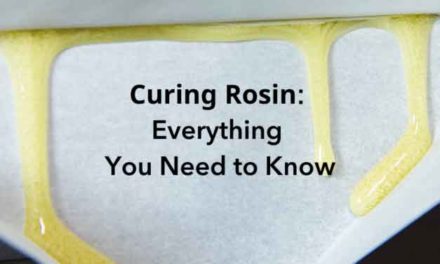For a long time, the various effects of cannabis have been attributed to its genetics or “strain,” whether that be an uplifting sativa, a sedating Indica or a balanced hybrid. But now, new research has revealed that these distinctions matter far less than we have been led to believe.
Walk into any dispensary and you are sure to be met with an array of wild sounding strain names. The nomenclature is often filled with shock value or plucked from popular culture, like Skywalker OG or Alaskan Thunderfuck, in an attempt to stand out from an overly packed crowd.
There are literally hundreds of different strain names out there, all making bold claims about the experience they produce. I’m sure many budtenders have confidently informed you that sweet shatter you’ve been ogling is from a sativa dominant strain that produces a heady uplifting high perfect for day time use.
But sadly, much of this is marketing BS.
Indica vs Sativa: Is there Any Truth To the Cannabis Dichotomy?
From a botanical point of view, there are a number of different strains of cannabis. Two of the most famous botanical types of weed that produce psychoactive flower are of course: sativa and indica.
Sativas are commonly found in Central and South America. They grow tall, in warm equatorial climates, and have traditionally been defined by their high THC levels which create an uplifting buzz.
Indicas, on the other hand, hail from mountainous regions in Asia. They typically grow short and compact at higher elevations and in colder temperatures. Indicas tend to contain high levels of CBD, which contributes to their more sedating effect.
Yet is there any truth to these claims? Thanks to centuries of cultivation and crossbreeding, the genetics of the cannabis plant are now so mixed up that very few pure indica or sativa strains exist. In fact, nowadays, almost everything you smoke will be a hybrid of the two, and so these old ways to categorize the cannabis experience are hardly relevant.
Are Cannabis Strains all the Same?
A recent study that investigated 33 different strains from multiple different cultivators made some startling discoveries. After full biochemical analysis was performed on each sample, they found that regardless of plant genetics, or cultivation practices, the levels of THC and CBD were more or less the same.
While you could be forgiven for thinking that means all strains are the same, they aren’t. What this study proved was that THC and CBD levels alone cannot account for the varying effects of different varieties of cannabis. Some weed does give you an uplifting high, and other strains have a calming effect, but the reality is that plant genetics and THC to CBD ratios are not an accurate markers when it comes to describing the effect one type of weed has over another.
That’s because it’s an entire symphony of cannabinoids and terpenes that are responsible for everything that makes a cannabis high what it is. It’s not just about the strain, or how much THC there is, you have to take into account the entire cannabinoid and terpene profiles when describing the effects a particular bud will produce.
Beyond THC and CBD
The more we understand of cannabis, the more we discover that the all the psychoactive and therapeutic properties we associate with it come from the trichomes the plant produces and not the plant itself.
These tiny resin producing appendages that cover the outside of cannabis buds are packed with hundreds of different cannabinoids and numerous essential oils known as terpenes. Working together, in what’s referred to as the entourage effect, they are what are truly responsible for all the magic of weed.
Of course, plant genetics affect trichome production, but there are many factors beyond genetics that affect a plant’s terpene and cannabinoid content. Where the weed was cultivated, how it was grown, and even at what time it was harvested all have a massive influence on the resulting flower.
While we’re certainly not saying we should throw strain names in the trash, we’re also saying they may not be the best predictors of experience. Most of them are awesome and have become a hallmark of the cannabis community and experience. But now as the cannabis industry becomes more sophisticated, we need to start looking past strain names and dig deeper into a flower’s cannabinoid and terpene profile to really start to understand the high it’ll produce. After all, that’s where the credit is due.





